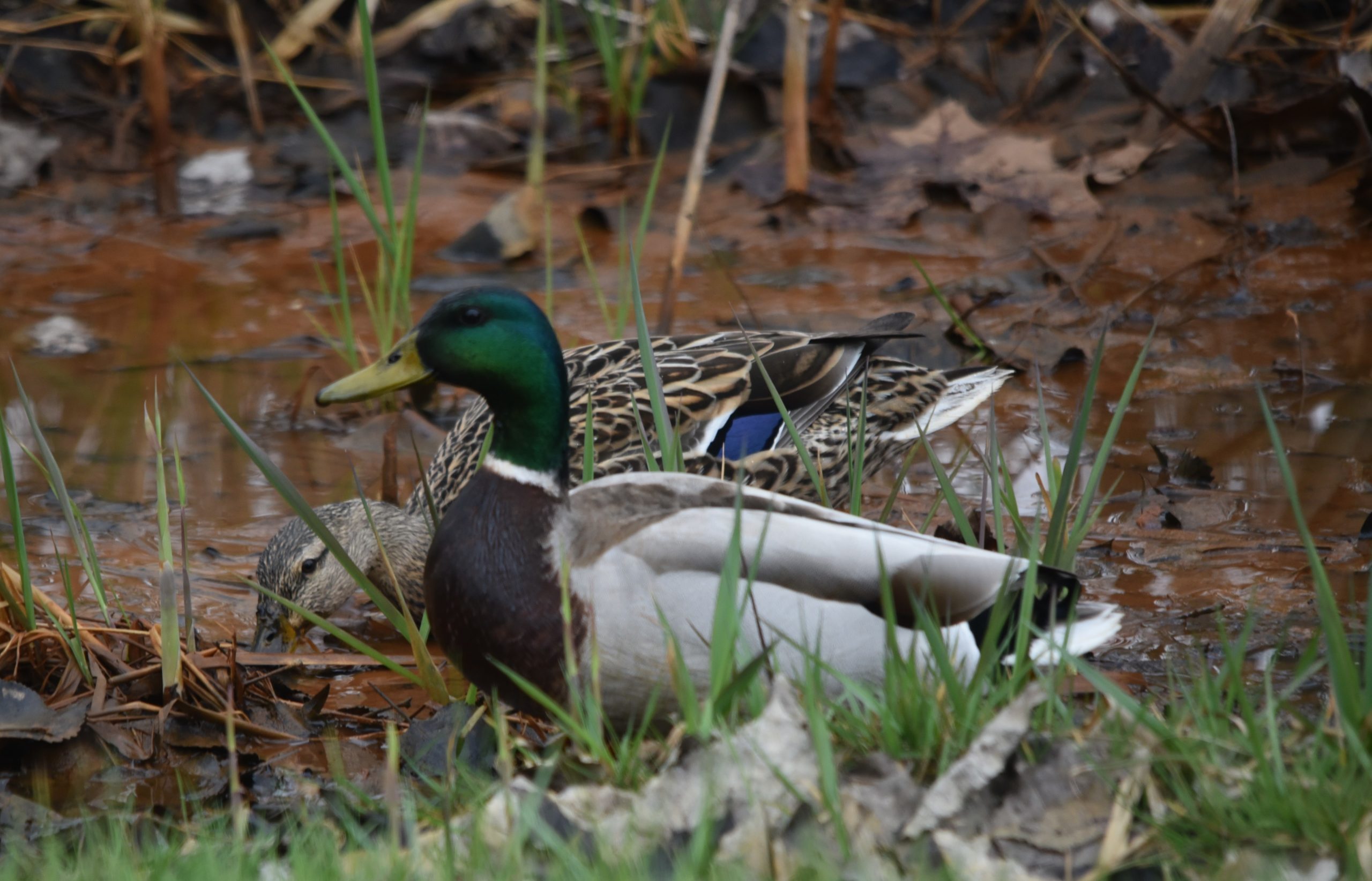
Waterfowl hunters began buying them nearly a century ago. Just after that, collectors joined the fun.
Since its inception in 1934 when Franklin D. Roosevelt signed the Migratory Bird Hunting and Conservation Stamp Act into law, the duck stamp (as it’s commonly known) has garnered more than $1 billion for habitat conservation in the national wildlife refuge system. In recent years more wildlife enthusiasts, including birdwatchers, have been swooping in to buy stamps that historically were of interest mostly to hunters and collectors.
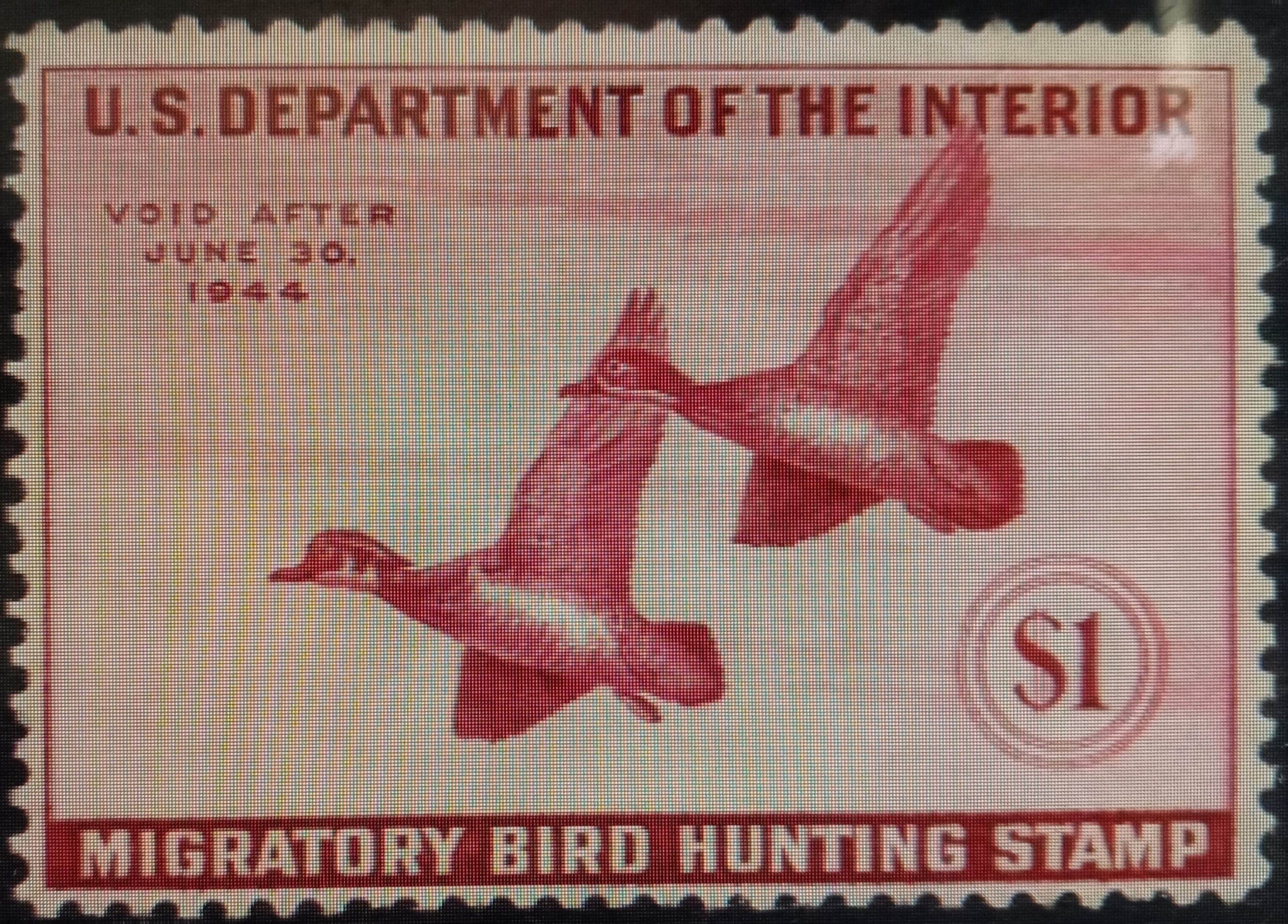
The very first duck stamp, created by Michigan native and Pulitzer Prize-winning cartoonist Jay Ding Darling in 1934.
Erin Rowan was a philatelist, or stamp collector, in her youth, long before entering the conservation field. But even after she entered the profession, duck stamps were not on her radar.
“Not until I got this job with the Michigan Department of Natural Resources and Audubon and the MI Birds program where I got exposure and learned what it was all about,” she said. Rowan is an ornithologist and senior conservation associate. “I manage the MI Birds program, which is an engagement and outreach program aimed at all Michiganders’ engagement, understanding, care and stewardship of public lands important for birds and people. The duck stamp plays a role in that.”
Rowan said wildlife watching is on the rise, especially since the pandemic.
“In 2016 just 4% of Americans 16 and older hunted, while 34% participated in wildlife watching,” she said. “There is great potential in engaging non-traditional groups for waterfowl and bird conservation.”
The origins
When the duck stamp was introduced amid dwindling duck populations and habitat, it was meant to conserve lands on which ducks and geese thrived, meaning mostly wetlands and the prairie pothole regions in the north central U.S.
Every licensed hunter who aimed for waterfowl was required to also purchase a duck stamp for $1. The price has since risen to $25. Overhead costs for the federal program are amazingly low – 98 cents of every dollar goes directly toward the purchase or long-term lease of critically important land. To date, more than 8.1 million acres of land in 45 states have been purchased or leased with duck stamp funds, including more than 464,000 acres in Great Lakes states. All the land has become or is associated with national wildlife refuges.
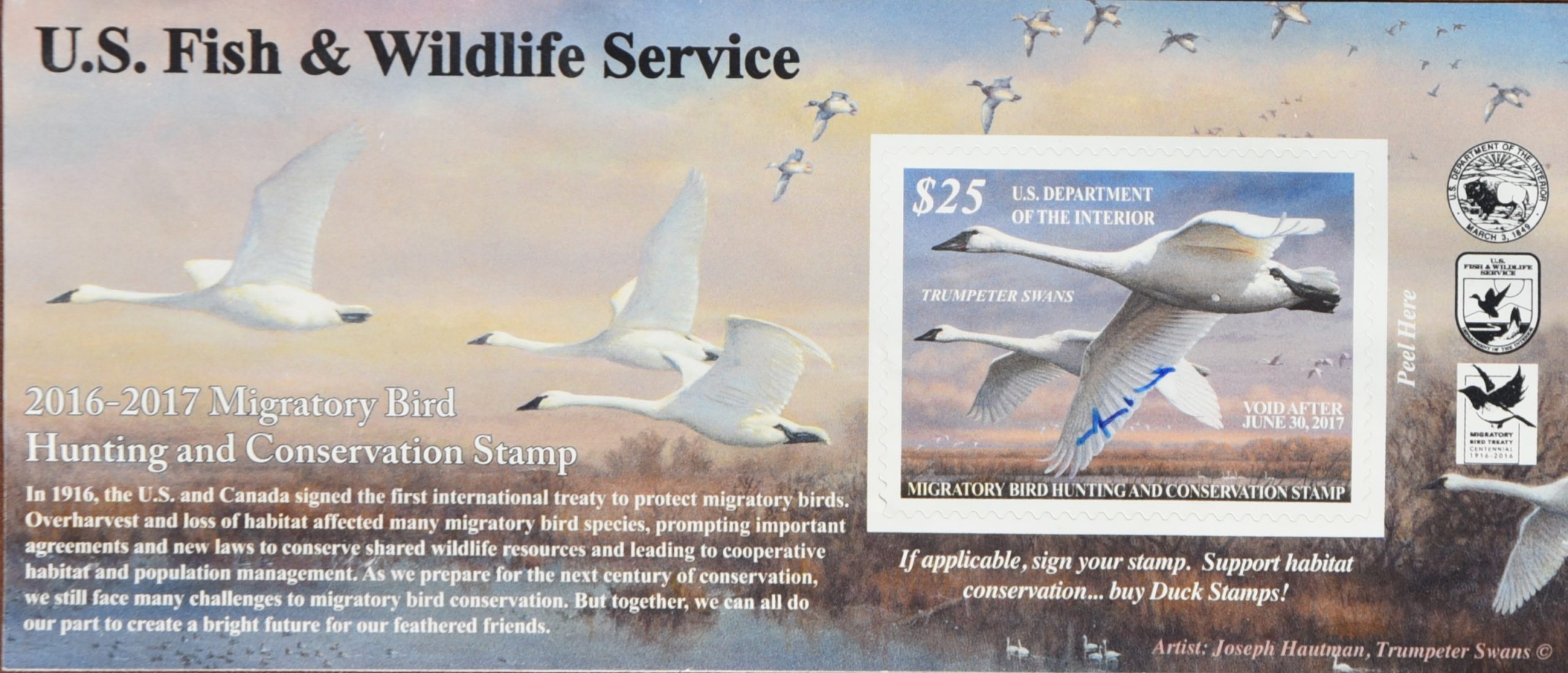
The 2016-2017 duck stamp, in the format sold to most hunters.
“Those lands are for the use of all people, all Americans and all of our visitors, for that matter,” said Mike Brasher, national wildlife biologist with Ducks Unlimited. “They preserve some of the best of the best of waterfowl and other wildlife habitats. Traditionally the duck stamp program was established with waterfowl and habitat as a primary focus, but over the years the benefits of these activities has become obvious to anyone that’s spent time on a refuge. Although it was rooted in the interest for protecting habitats for waterfowl, it’s been tremendously successful in protecting habitat for just about any animal in North America you can think of.”
According to Brasher, one great feature of duck stamp dollars is the value of their acquisition-only utilization, including instances where long-term easements are purchased.
“Easements are really a big part, a significant and very important part of the duck stamp program and the Migratory Bird Conservation Fund,” he said. “Some may be perpetual, but all easements conserve habitat.”
Chris Sebastian, Ducks Unlimited public affairs coordinator, said he’s not seen duck stamp monies used for restoration or management activities. And that’s where partnerships with organizations like his come into play.
“Getting it is the biggest hurdle,” he said. “Once land is acquired, then partnerships come into play and restoration and management projects can emerge. Duck stamps gain access to land and then many partners, like DU, can come in and work to create habitat for waterfowl and more than 900 species that wetlands are home to.”
Sebastian cited Ottawa National Wildlife Refuge in Ohio.
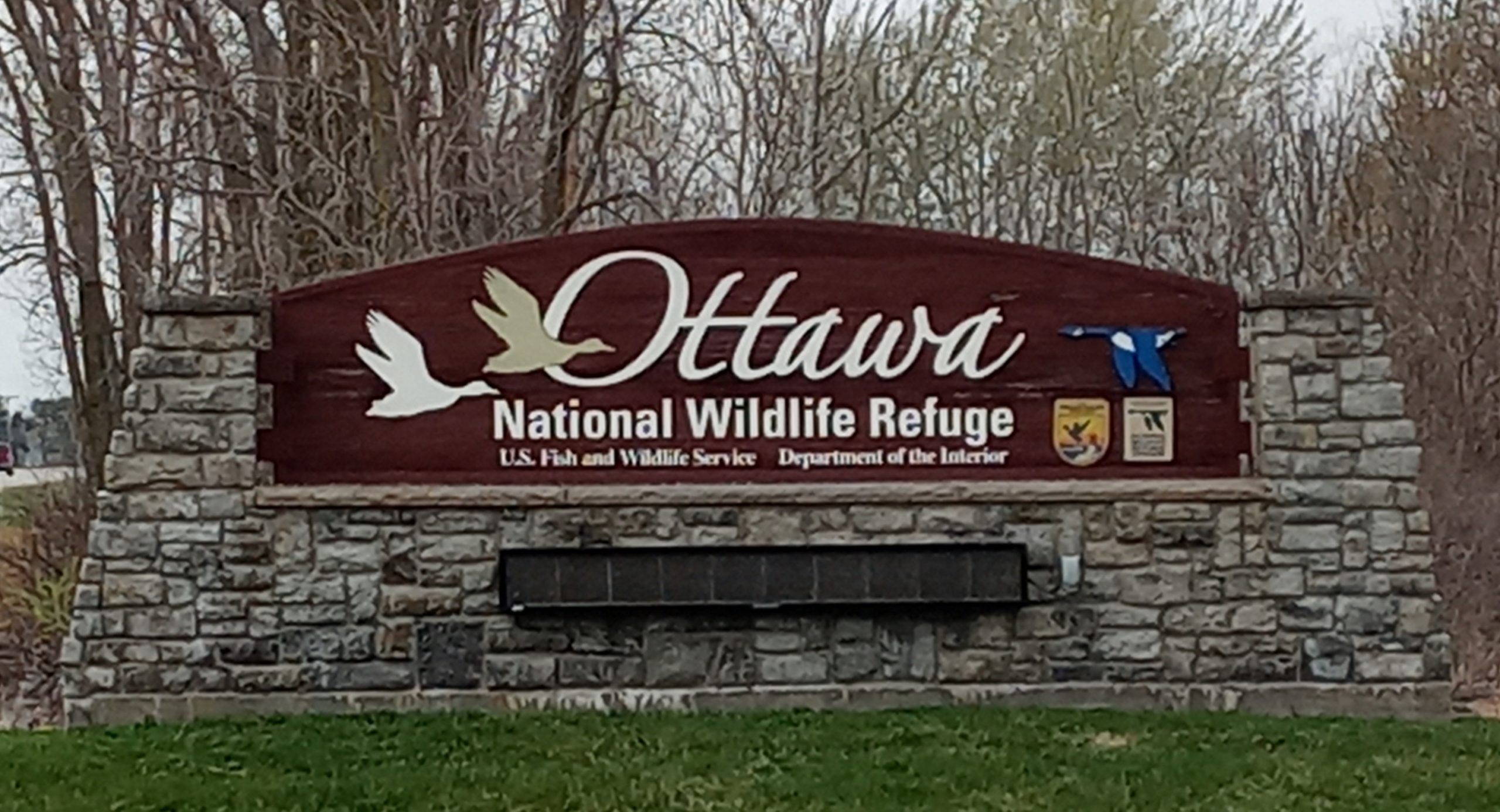
Ottawa National Wildlife Refuge is Ohio’s only national refuge and was acquired with duck stamp funds. (Photo Credit: James Proffitt)
“That’s a really great example of duck stamp dollars being used to continually expand a really important complex. And if you see the boundaries of ONWR, it’s not just a nice square or rectangular parcel, there are pieces jutting out here and there acquired over time,” he said. “That’s just one example. In Michigan and New York and Wisconsin and across the country, we try to build on what’s already there.”
Sebastian said building onto existing wetlands complexes garners the best bang for the buck with duck stamp dollars – no need to re-invent the wheel. And private organizations often play key roles in land acquisition. Especially when a property comes up for sale suddenly and the federal government is not equipped to purchase right away. Organizations like DU and others can purchase immediately, then transfer the property to the U.S. Fish and Wildlife Service later.
What is a duck stamp?
At its core, a stamp is a permit to hunt waterfowl.
In reality, it is actually a peel-and-stick stamp with a gummed back and perforated edges just like a postage stamp. Duck stamps can usually be purchased wherever hunting licenses are sold in addition to post offices, wildlife refuges and through many third-party vendors. Unfortunately, they do not count as official U.S. postage and cannot be used to mail letters or packages. They feature depictions of a different waterfowl species each year. In 2020 a new rule requires artists to incorporate the theme of “celebrating our waterfowl hunting heritage.”
And they are collectible.
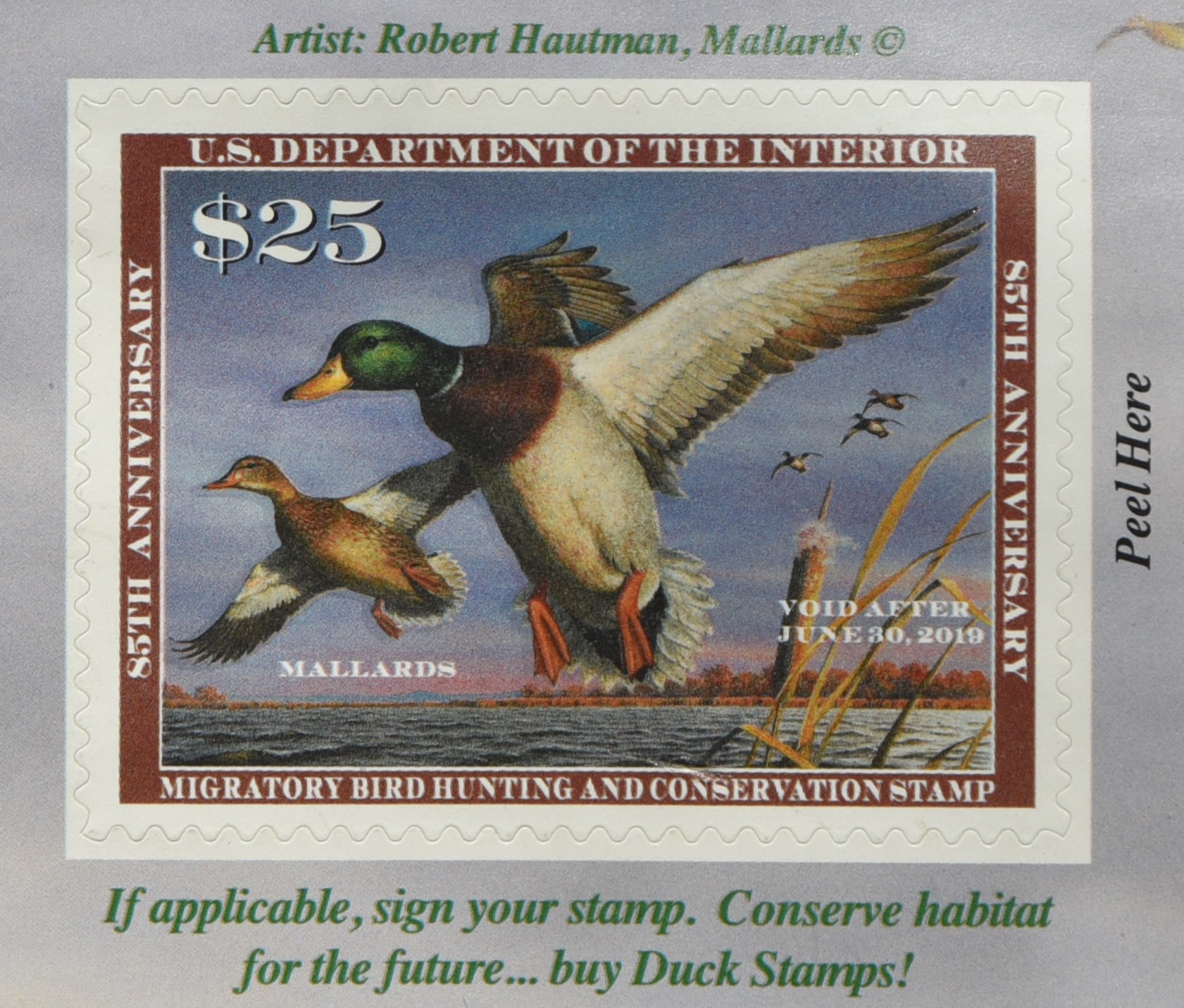
The 2018-2019 Migratory Bird Hunting and Conservation Stamp.
“My dad got me started. My first duck stamp I purchased in 1966,” said Richard Houk, vice-president of the National Duck Stamp Collectors Society. “I grew up on a lake close to the Mississippi River and started duck hunting when I was a kid and I’m still duck hunting in the same place I always hunted and now I’m 70.”
But things have changed, Houk said. The waterfowl population isn’t even close to what it was when he was a kid. And duck stamp sales, a gauge of hunters and the hunted, confirm that. First-year sales in 1934 were 635,001. They peaked in 1971 with sales of 2.4 million before declining to 1.51 million in 2018. Houk’s been in the duck stamp arena for decades and writes for waterfowl hunting magazines and also serves as a hunting guide. Despite a decline in number of hunters, interest in duck stamps remains keen. Especially during the pandemic when most people spent time stuck at home.
“Now everyone is jumping on the bandwagon,” Houk said. “People are getting more interested in baseball cards, duck stamps, whatever. The interest is really, really good right now.”
In addition to the actual stamps which hunters must purchase, sign and possess to hunt waterfowl, there are first-day cover envelopes, collectible cards and a printing of about 30,000 special collector stamps each year.
Beginning in 1949, stamps have featured the winner of an annual contest, the only art contest sponsored by the federal government. Winners are required to make several appearances as well as bound by contract to sign their winning stamp if requested –even years later.
“The artist-signed stamps especially, there’s been a tremendous run on those during the past year. It’s just been amazing what the prices have been on some of those stamps,” Houk said, going on to talk about plain old, un-signed duck stamps. “If you want a perfect number one or two from 1934 or 1935, you’re going to be spending $400 or $500 or more for it.”
A quick online perusal of duck stamps of all styles, ages and conditions runs the gamut price-wise, from $20 or so to more than $3,000.
But while collecting them is a great hobby for folks who love history and nature, people who want to make an impact on waterfowl should buy the newest stamps every year – even if they don’t hunt waterfowl or have never hunted at all.

A Canada goose nestles into its nest on the Ottawa National Wildlife Refuge. (Photo Credit: James Proffitt)
Yearly contest
According to USFWS statistics, entries for the 2020 contest came from all over the U.S., though mostly from nine states totaling 62% of the entries. Artists from Minnesota, Wisconsin, Virginia, Florida and Michigan comprised 37% of the entries in the 2020 contest.
While a total of 15 mediums were submitted, 88% were either acrylic or oil. And artists tended to be older, with 75% being 50-plus and 8% being 80-plus.
The most-featured bird over the decades? Canvasbacks and mallards at six appearances each.
Three members of the Hautman family won the contest a total of 13 times, including five times each for Joseph and James Hautman of Minnesota. Maynard Reece of Iowa also won five contests.
According to Vanessa Kauffman, public affairs officer with USFWS, each year five eligible birds are offered up as fair game in the contest.
“We try to make sure there is at least one of the five species that can be found in every part of the country,” she said. “We try to not have any ‘look-a-likes’ during the same contest.”
Kauffman said the contest birds are selected from a pool of about 43 birds each year. By 2001, the black scoter was the only species that had never been depicted on a stamp. In the interest of fairness, that year’s contest allowed only for one bird: the black scoter. And it won.

Madison Grimm’s 2020-2021 winning art on the junior duck stamp.
In addition to the big league, there’s a Junior Duck Stamp Contest held each year also, with the winning entry sold as a $5 stamp. In this contest, the best of show from 50 states and U.S. territories are judged nationally. The winning stamps’ proceeds are returned to states in order to promote the program and recognize the students’ achievements.
Madison Grimm’s father has won the contest twice, once with a mottled duck and once with a canvasback. So she comes by it naturally. Madison won the Junior Duck Stamp Contest at age 6 with a canvasback and again in 2020 at age 13 with a wood duck.
Conservation by the numbers
Nate Shipley’s a graduate research assistant at University of Illinois Urbana-Champaign, and in conjunction with three others, published a study titled “Do Birdwatchers Buy Duck Stamps?”
The answer is yes, according to Shipley, going on to explain stamps are one of the few readily available avenues for birders to directly contribute habitat dollars for governmental land conservation.
“As an academic in conservation I was always kind of astounded at the lack of a feasible tax or fee a birder would pay to contribute to birdwatch,” he said. “It struck me as odd that there isn’t a vehicle for a birder who doesn’t hunt to benefit some type of federal conservation allocation.
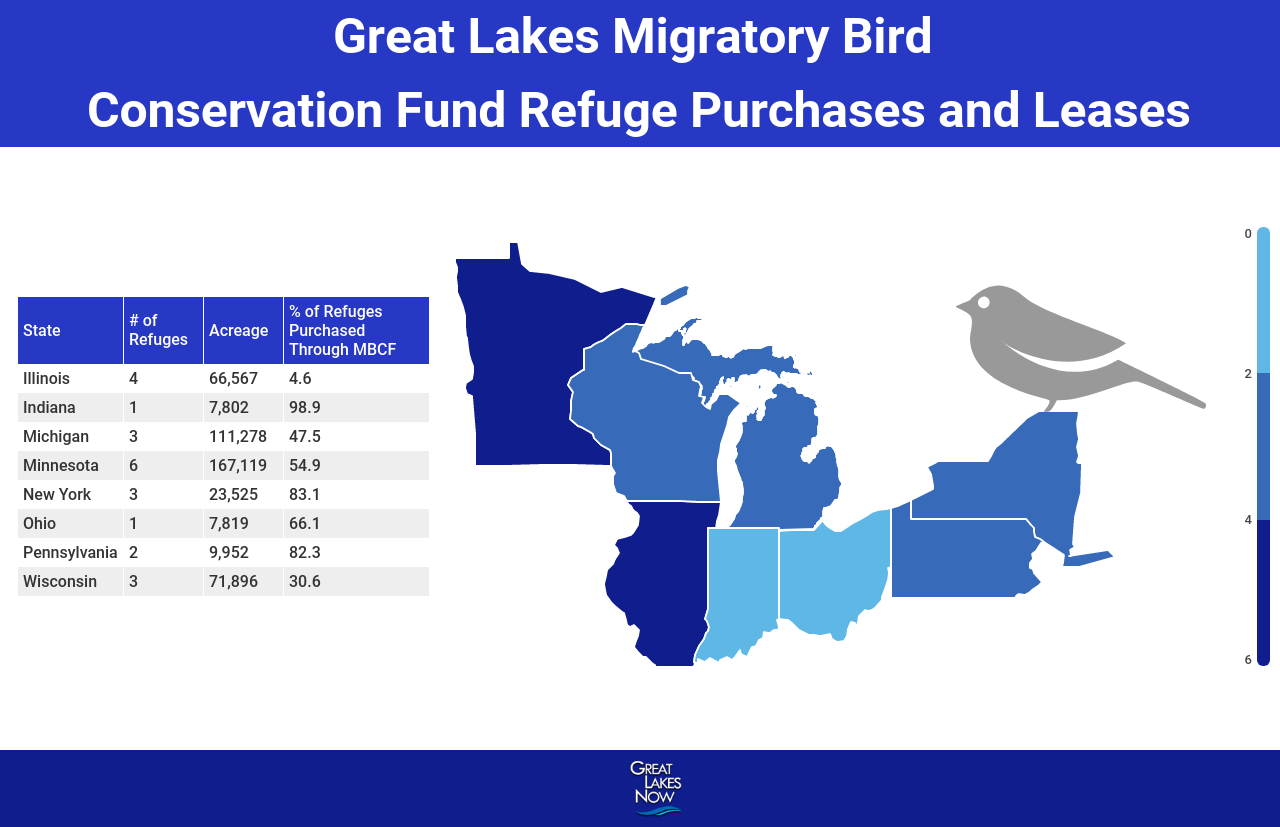
Source: U.S. Fish and Wildlife Service 2020 report (Graphic by Christina Amato, Great Lakes Now)
Unfortunately, the USFWS only tracks overall stamp sales. Therefore it’s impossible to say exactly how many are purchased by collectors, birders or others, outside of hunting, each year. It’s also not known how many hunters purchase more than the single stamp required.
The study questioned 3,000 participants in the American Birding Association’s 2015-2016 Christmas Bird Count. It found that just 20% had purchased stamps during the previous two years, though about 40% of that group had also hunted. Overall, 14% of birders appear to have purchased duck stamps for non-hunting reasons.
Highly specialized, or what Shipley calls hardcore, birders were more likely to buy duck stamps for non-hunting reasons. Age, gender and education played minimal roles in determining who buys stamps. Outside hunting participation and specialization of birders, the only factor that seemed to be significant in those surveyed was political – the more left-leaning the birder, the more likely to acquire stamps.
But the overall low percentage of purchasers means duck stamps might not currently be the greatest tool for conservation. In short, for better conservation of wetlands, marshes and shore areas important to birds, more birders need to buy duck stamps, Shipley said.
“I think there is a growing awareness, it is being pushed. Kim Kauffman at Black Swamp Bird Observatory, she does. And the ABA definitely pushes it,” Shipley said.
Both organizations’ websites offer duck stamps. “People who are serious birders, we need to be advocating for the duck stamp. I think it’s more important to us because we have a broader sense of what it does and maybe we’re more appreciative of that.”
Sebastian appreciates it though, and so do many of the nation’s hunters.
“Buy duck stamps. And you don’t need to buy just one as a hunter, buy more,” he said. “Every time I’m out on a national wildlife refuge we talk to people and birders come up to us and say they buy stamps.”
And, Sebastian said, in addition to the 900-plus species that utilize wetlands in the U.S., plenty of people do too.
“Anyone who goes out there now, kayakers and hikers, anyone on the Great Lakes with a fishing pole, they’re benefitting from work the DU and USFWS have done with duck stamp dollars,” he said.
Every duck stamp helps
Brasher said waterfowl, other wildlife and their environment are under constant peril with climate change. And buying duck stamps is just another way to help.
“Those threats continue to happen at such a pace it takes all of us hunters and non-hunters alike to come together under the common umbrella of conservation, supporting it by whatever means possible whether it be buying a duck stamp or communicating with your legislators. We all need to pull together in the same direction to mitigate some of these factors,” he said, going on to talk about his stamps. “There are all different motivations for purchasing this stamp or even multiple stamps. I would even say I’m a bit of a hobbyist duck stamp collector myself. I have 30 or 40, and I’m trying to build it out a little bit more, so I routinely buy at least two and oftentimes three or four a year.
“All that money goes into the same place, conservation.”
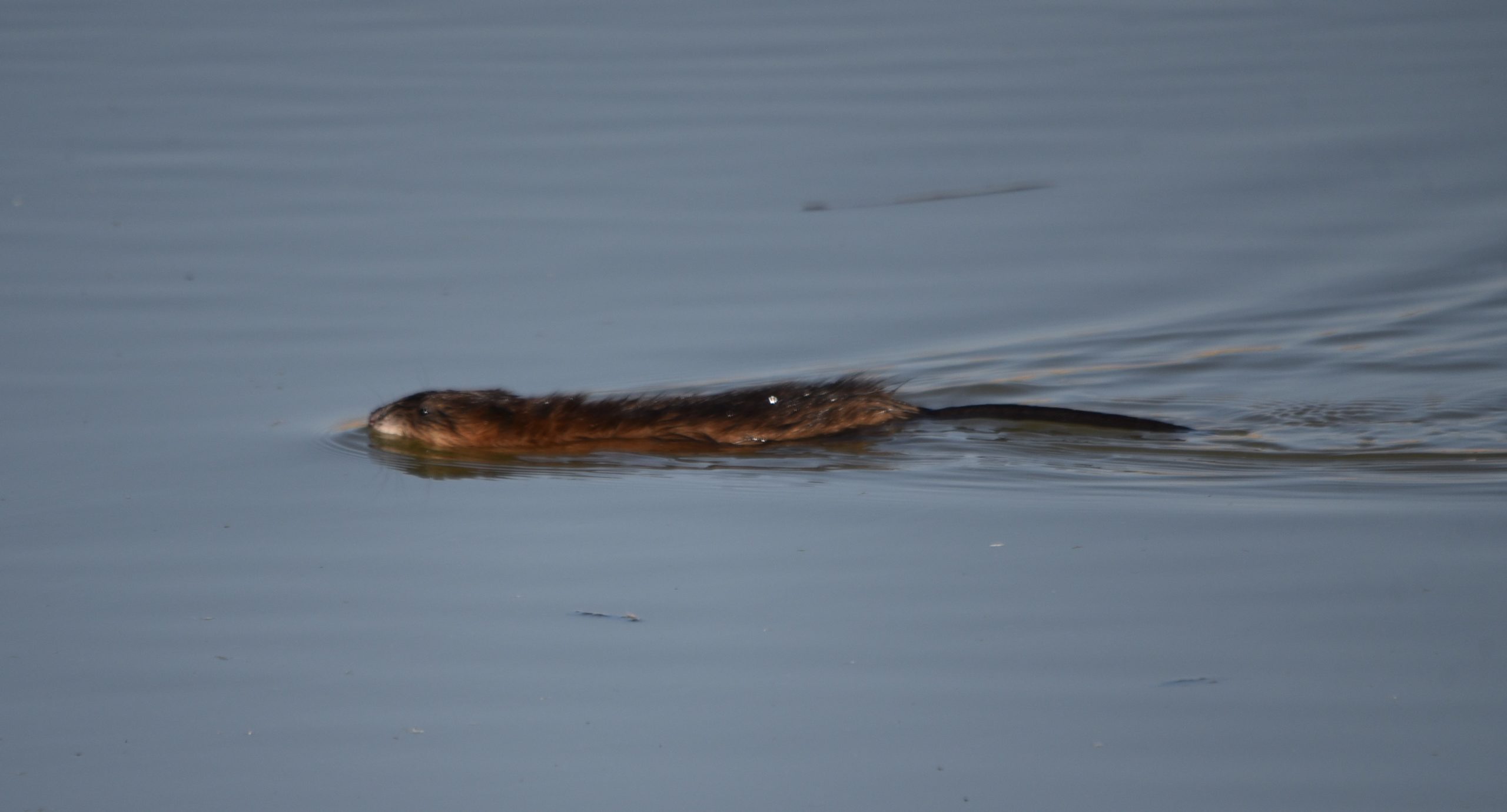
Popular among trappers and wildlife watchers alike, muskrats are found at just about every national wildlife refuge. (Photo Credit: James Proffitt)
Sebastian said when he’s going hunting with others, he often buys plenty since they can be hard to find in remote areas sometimes.
“I’ll buy three or four at a time and then the others can pay me back for those and even if they already have their own, that’s not a bad thing. Then we just bought three or four more stamps for conservation – they never go to waste.”
Catch more news on Great Lakes Now:
Short Season: Sturgeon spearing plays big role in conservation efforts for the ancient fish
Winous Point: Conservation and research play key roles in history of one of the oldest hunting clubs
U.S., Canadian researchers conduct binational birds conservation research
API key not valid. Please pass a valid API key.Featured image: Mallards feeding at the Ottawa National Wildlife Refuge. (Photo Credit: James Proffitt)




